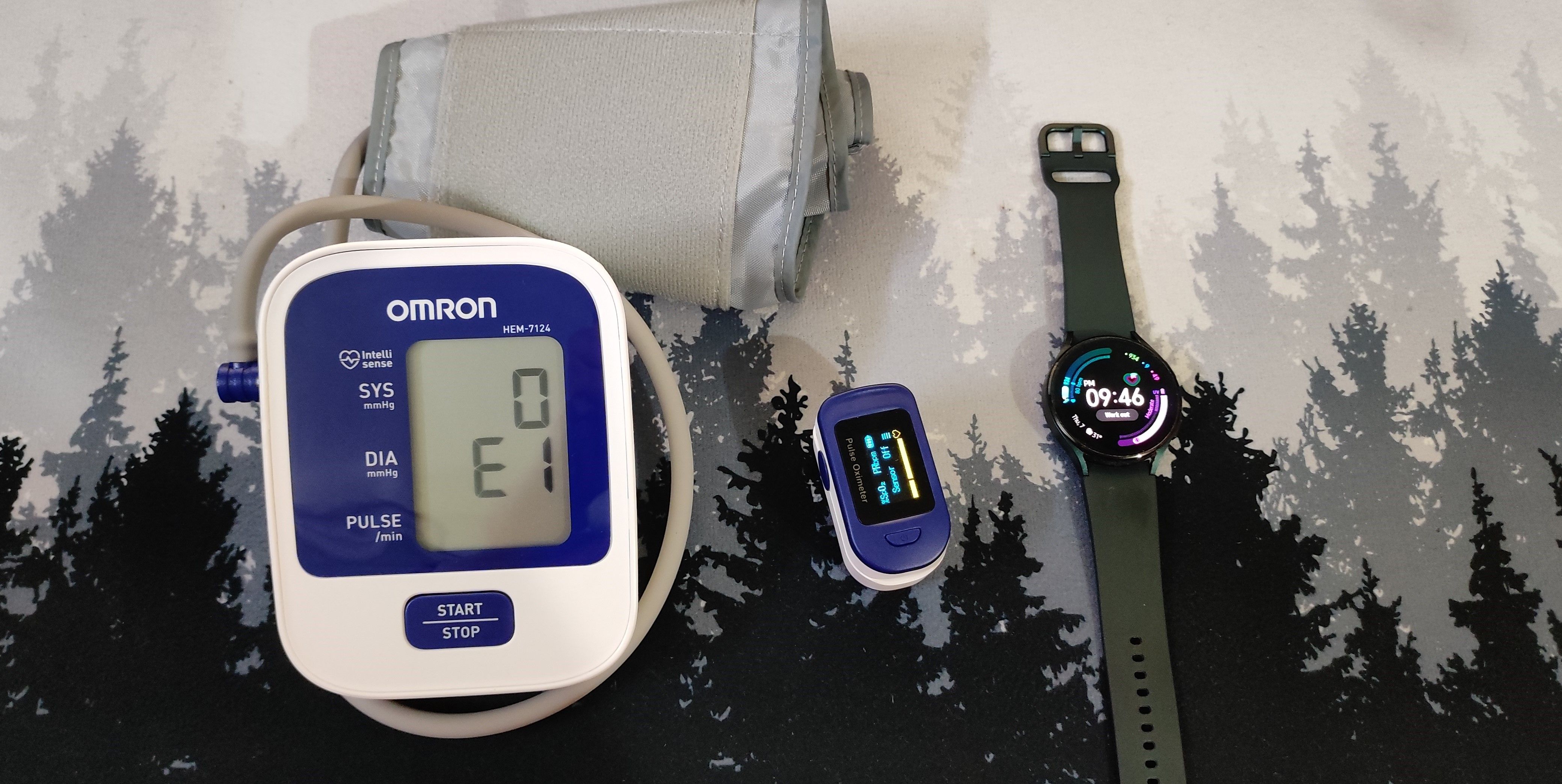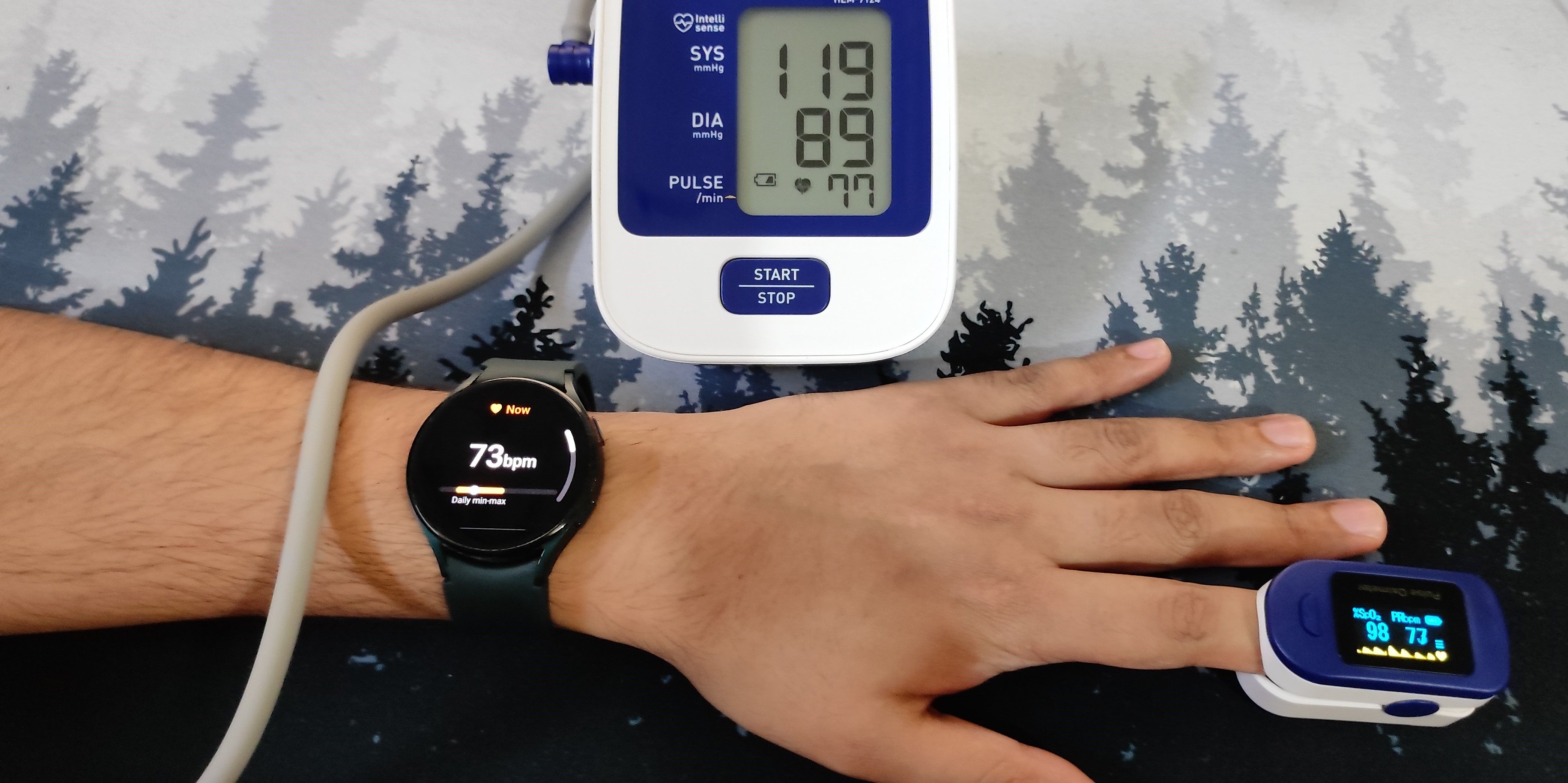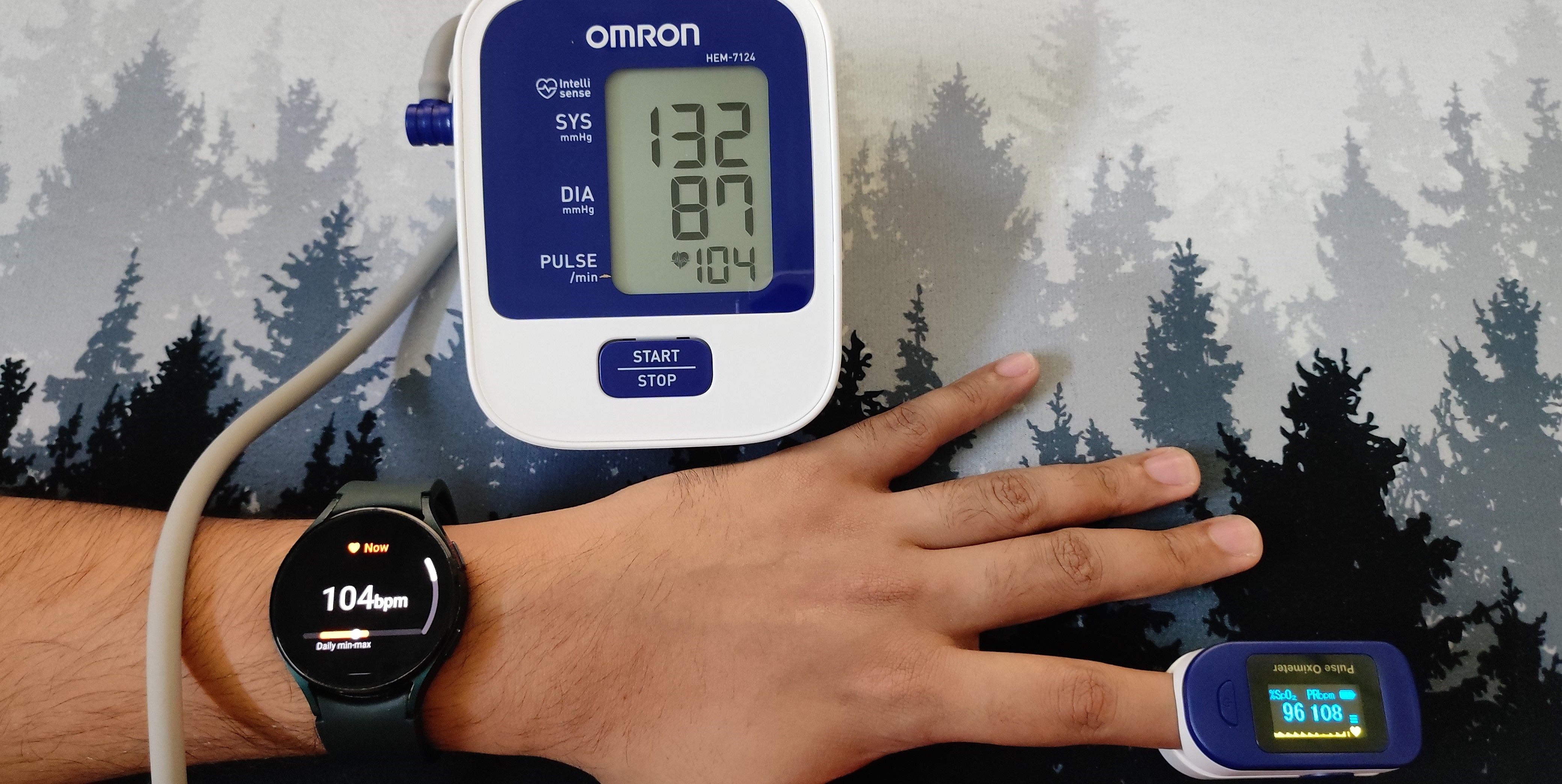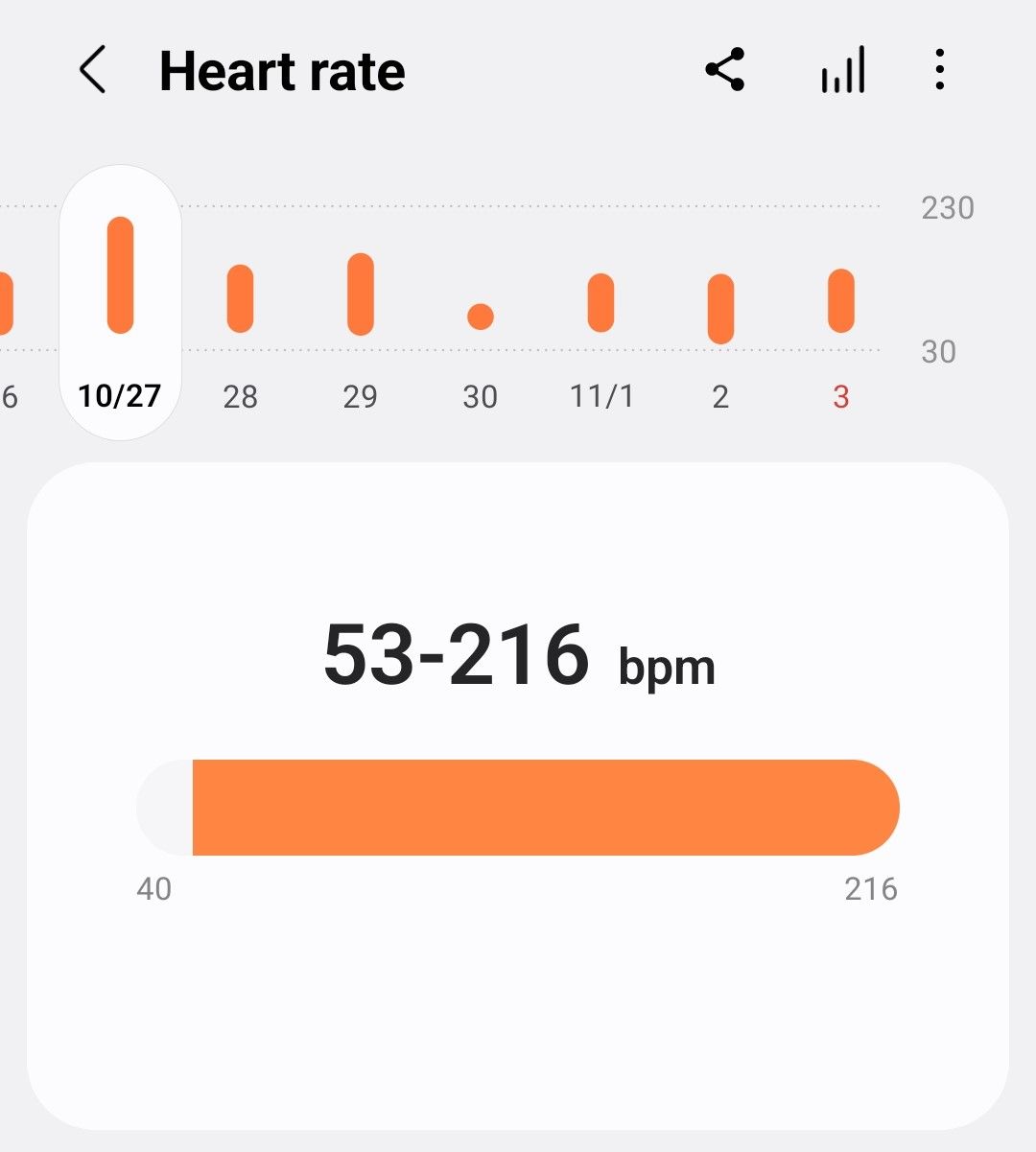Smartwatches like the Samsung Galaxy Watch series have become increasingly sophisticated health monitoring tools. But how reliable are they compared to actual medical devices? I tested the Galaxy Watch against medical-grade equipment to find out.
Galaxy Watch vs. Medical-Grade Equipment
To test the Galaxy Watch‘s heart rate monitoring accuracy, I compared it with medical-grade equipment from my local hospital’s pharmacy, specifically a digital blood pressure monitor and a pulse oximeter. I had seen both models used in my hospital’s outpatient department (OPD), which gave me confidence in purchasing them for personal use.
Also, to give you a better understanding, I conducted two specific tests—resting heart rate and post-exercise heart rate measurements. This should give you an idea of how accurately the sensors capture the high and low heart rate readings.
Resting Heart Rate Test
For the resting heart rate test, I sat comfortably in my chair, attached the pulse oximeter to my finger, wrapped the blood pressure monitor around my arm, and kept the Galaxy Watch secured on my wrist. Typically, my resting heart rate hovers around 60 beats per minute (BPM). Still, you’ll notice slightly elevated readings in these tests—likely due to the mild stress of coordinating measurements and capturing photos simultaneously.
The readings on each device are as follows:
- Galaxy Watch: 73 BPM
- Digital Blood Pressure Monitor: 77 BPM
- Pulse Oximeter: 73 BPM
Post-Exercise Heart Rate Test
For the post-exercise test, I completed a quick 5-minute workout session consisting of sit-ups and pull-ups. Immediately after, I sat down and took measurements from all three devices.
The post-exercise readings showed:
- Galaxy Watch: 104 BPM
- Digital Blood Pressure Monitor: 104 BPM
- Pulse Oximeter: 108 BPM
Understanding the Results
This is not a formal scientific study but rather a demonstration of how the watch performs in comparison to medical-grade equipment, supported by my personal experience using it for two years and the data from this specific test. The results presented are intended for informational purposes only.
The results reveal some interesting patterns. During resting measurements, the Galaxy Watch and pulse oximeter showed identical readings (73 BPM), while the digital blood pressure monitor read slightly higher at 77 BPM. However, during post-exercise readings, the Galaxy Watch and blood pressure monitor aligned perfectly (104 BPM), while the pulse oximeter read higher at 108 BPM.
To understand these variations, we need to look at how each device measures heart rate. The Galaxy Watch and pulse oximeter use optical sensors, technically called photoplethysmography (PPG), to detect blood flow changes through your skin. In contrast, the blood pressure monitor uses oscillometric technology—when the cuff inflates around the arm, it detects tiny oscillations (vibrations) in the arterial wall caused by your heartbeat to measure the heart rate.
Since the pulse oximeter and the blood pressure monitor are using different technologies for measuring the heart rate, it’s expected that the reading will be off by a small margin. And if you notice closely, it’s exactly off by a factor of 4 BPM. The blood pressure monitor is consistently measuring 4 BPMs higher than the pulse oximeter. So, the rises and falls are perfectly aligned, just calibrated differently.
However, things get a bit puzzling when you include the Watch 4’s reading. In theory, it should be the same as the pulse oximeter since both use the same technology. You do see similar readings during the resting heart rate but a slight fluctuation of +4 BPM during the post-exercise measurement. This is overall consistent with my day-to-day experience using the Galaxy Watch 4, which, on average, reads 0-5 BPM higher than the pulse oximeter.
Some Problems With Continuous Measurement
In the above experiment, I was just sitting still and measuring my heart rate. However, the Galaxy Watch also offers continuous heart rate measurement, where it will track your heart rate throughout the day as you sit, stand, walk, run, exercise, and do all your day-to-day activities. This measurement presents some unique challenges.
The Galaxy Watches, including the Watch 4, use a PPG sensor. The technology is very efficient at measuring your heart rate while you’re at rest. However, the overall accuracy suffers when there is ambient movement or noise. So, it’s not surprising that I found the Galaxy Watch 4’s continuous heart rate monitoring data not that reliable.
For instance, there have been times when it gave me a warning that my heart rate was above 200 BPM. It was while I was exercising. However, I was feeling fine and normal. Out of curiosity, I checked using a pulse oximeter, and it showed my heart rate at around 160-ish(which is acceptable).
I suspect this is a similar problem that you’d also notice with the Watch 5 and Watch 6 since both use the same heart rate monitoring technology. However, the Watch 7 introduces an advanced BioActive Sensor, which Samsung claims is 30% more accurate at measuring heart rate during intensive workouts. So, I believe the error margin should be lower with the newer model, but not absent, and certainly not a replacement for medical grade equipment.
Can Your Heart Depend on the Galaxy Watch?
The Galaxy Watch demonstrates impressive accuracy for a consumer device, consistently tracking within 0-5 BPM of medical-grade equipment. However, it’s crucial to understand its intended role. Samsung is clear about this:
Galaxy Watch is intended for general wellness and fitness purposes only. Not intended for use in detection, diagnosis or treatment of any medical condition or disease.
Consider the Galaxy Watch more as a wellness companion than a medical device. Its strength lies in tracking patterns and trends—showing you how your heart rate changes throughout the day, week, or month. It can tell you when your heart rate is elevated during exercise, help you understand your resting heart rate patterns, and give you insights into your overall cardiovascular fitness.
However, if you need precise heart rate measurements for medical decisions—such as timing medication based on specific heart rate thresholds—rely on medical-grade equipment. The Galaxy Watch’s readings, while generally accurate, are not validated for medical use and should not be relied upon for diagnosis or treatment.
What makes the Galaxy Watch valuable is its ability to provide continuous, long-term heart rate monitoring in your daily life. This broader picture of your heart health trends can be incredibly useful for general wellness tracking and fitness goals, even if individual readings might vary slightly from medical devices.







